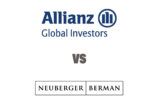It became a common and often despairing complaint among bond fund managers after 2008: how to find so-called incremental yield to achieve promised returns to investors or to match estimated or actual liabilities.
Their problems were one of the unintended consequences of stimulative policies by central banks in response to the global financial crisis more than a decade ago.
Low interest rates and, in particular, protracted quantitative easing (QE) by the US Federal Reserve — as well as by the European Central Bank, Bank of Japan and the Bank of England — brought the yields of high quality bonds down to such low levels that investors were often forced to move out of their credit comfort zone.
QE was one of the the measures to mitigate the recessionary fallout of the crisis. Central banks bought government bonds (and later, high quality corporate bonds) in order to increase the domestic money supply, reduce the cost of capital and stimulate investment.
A large, consistent buyer of government bonds boosted the immediate returns for fixed income funds, but the the problem came shortly afterwards: where could investors earn the yields they required?
The solution seems to have been to drop down the credit curve.
The best performing fixed income category over the past 10 years has been US high yield (138.5%) followed by European high yield (129.3%) and global high yield (127.13%), according to FE Analytics data. Investors would also have been better off in developed market credit, rather than emerging market bonds — whose fund sector average cumulative return is about 60% during the period.
The worst performers are at the better quality end of the spectrum, with funds invested predominantly in investment grade bonds producing average cumulative returns of less than 50% during the past decade.
The most volatile sector has been the European high yield sector, with annualised volatility of 11.66%.
But US high yield returns have fluctuated less than European (general) fixed income funds, with volatility of 5.51% compared with 8.7% for the latter, according to FE Analytics.
Comparative performance of fixed income sector averages


















